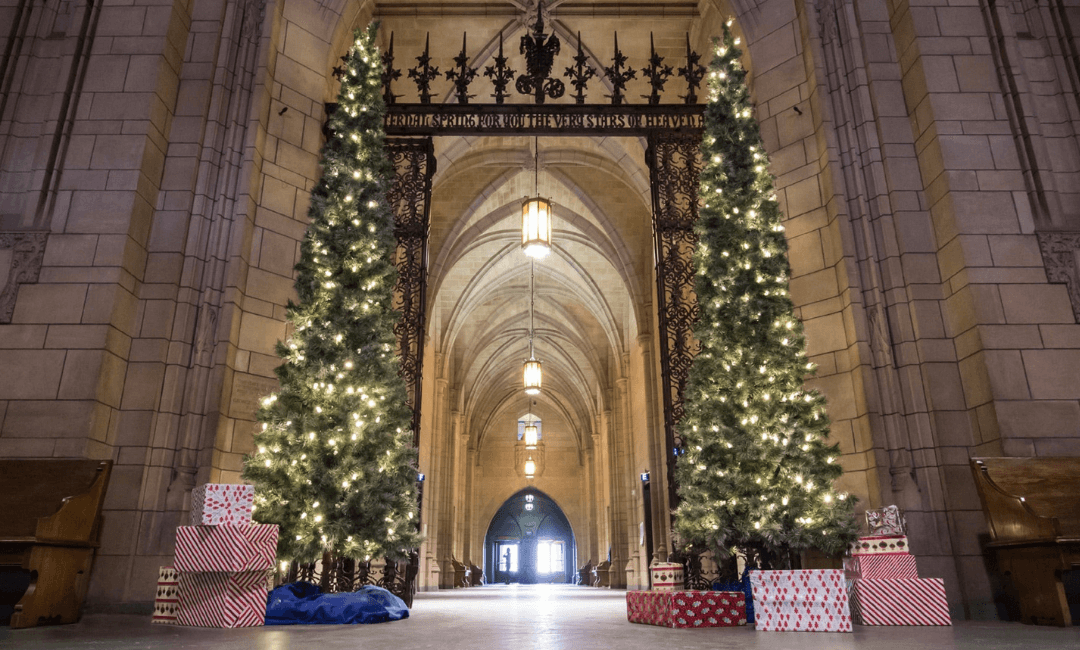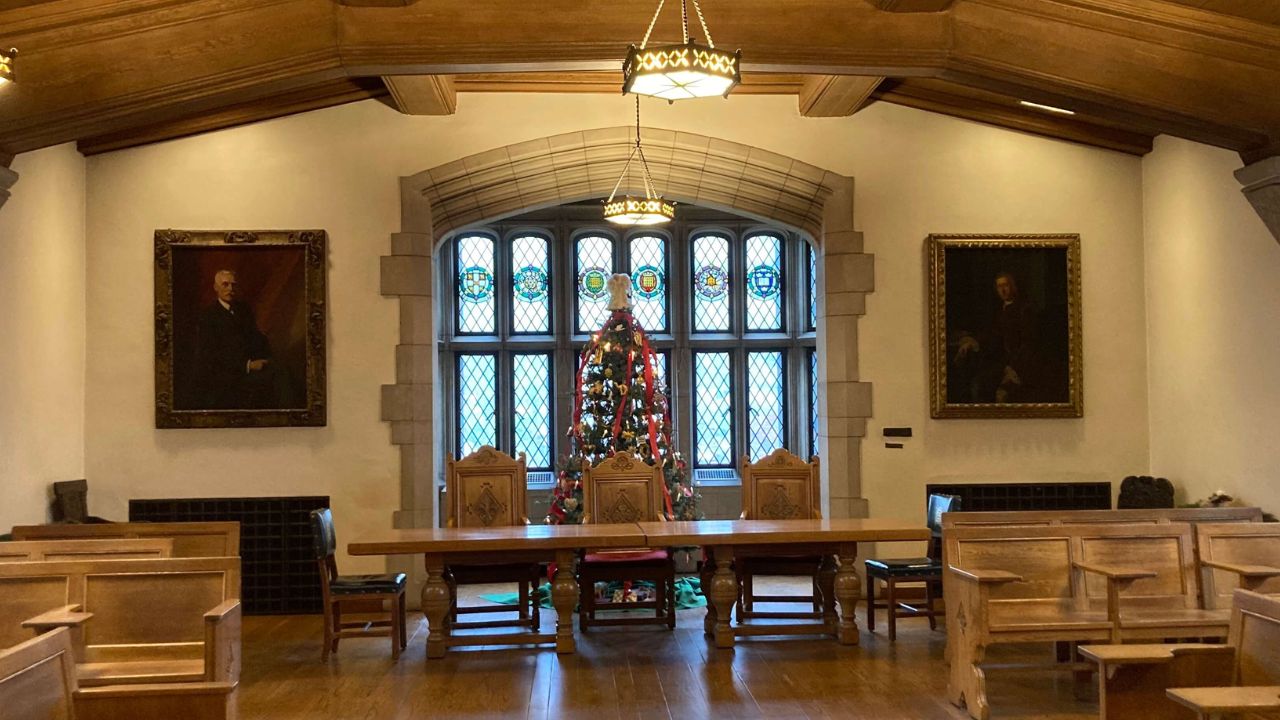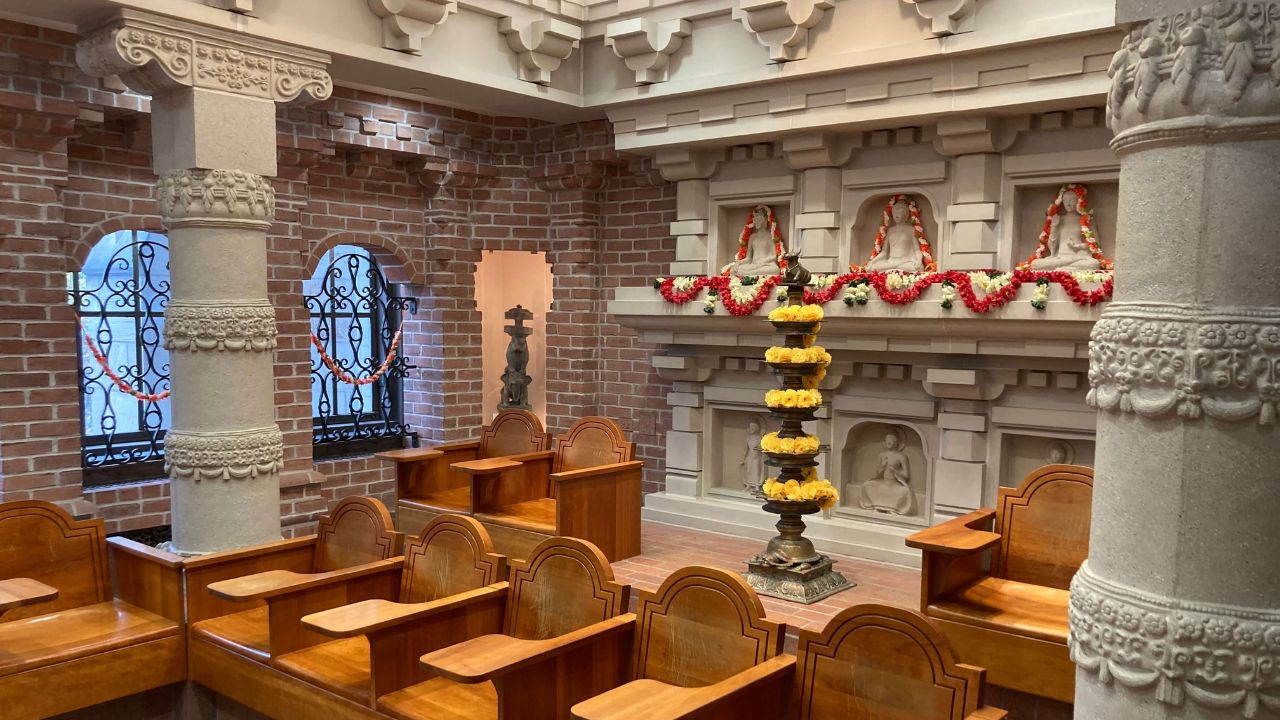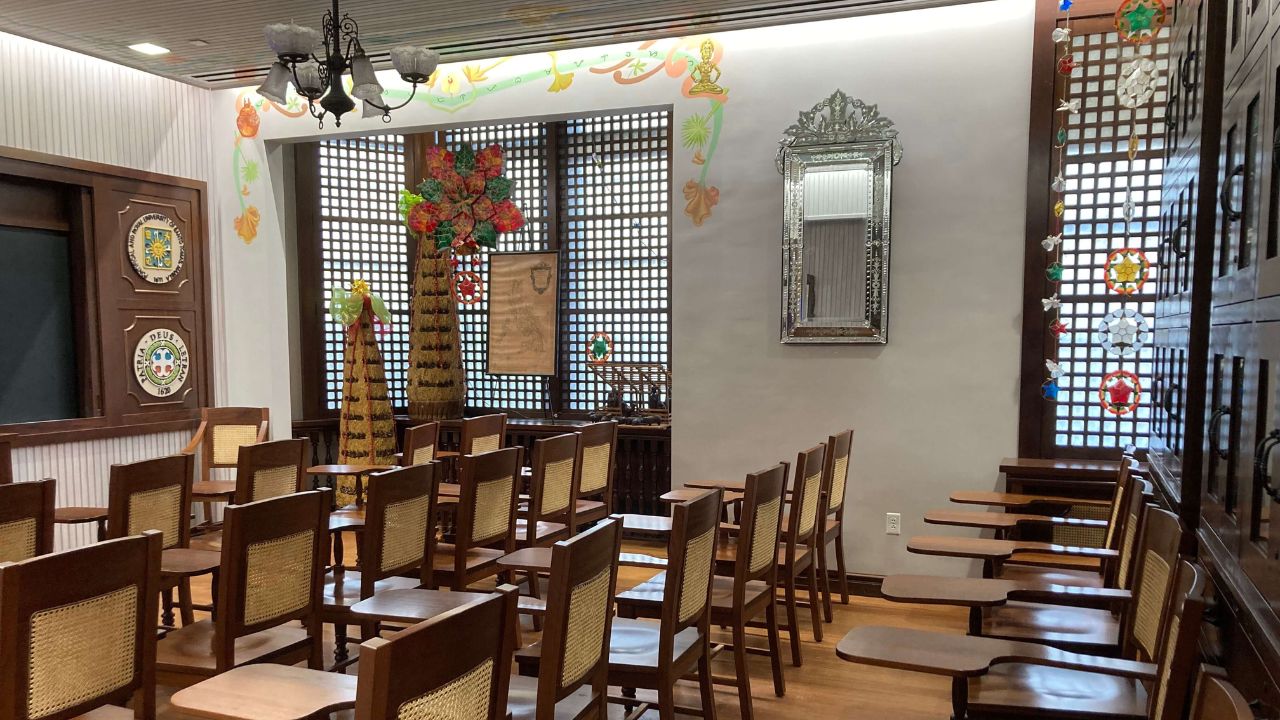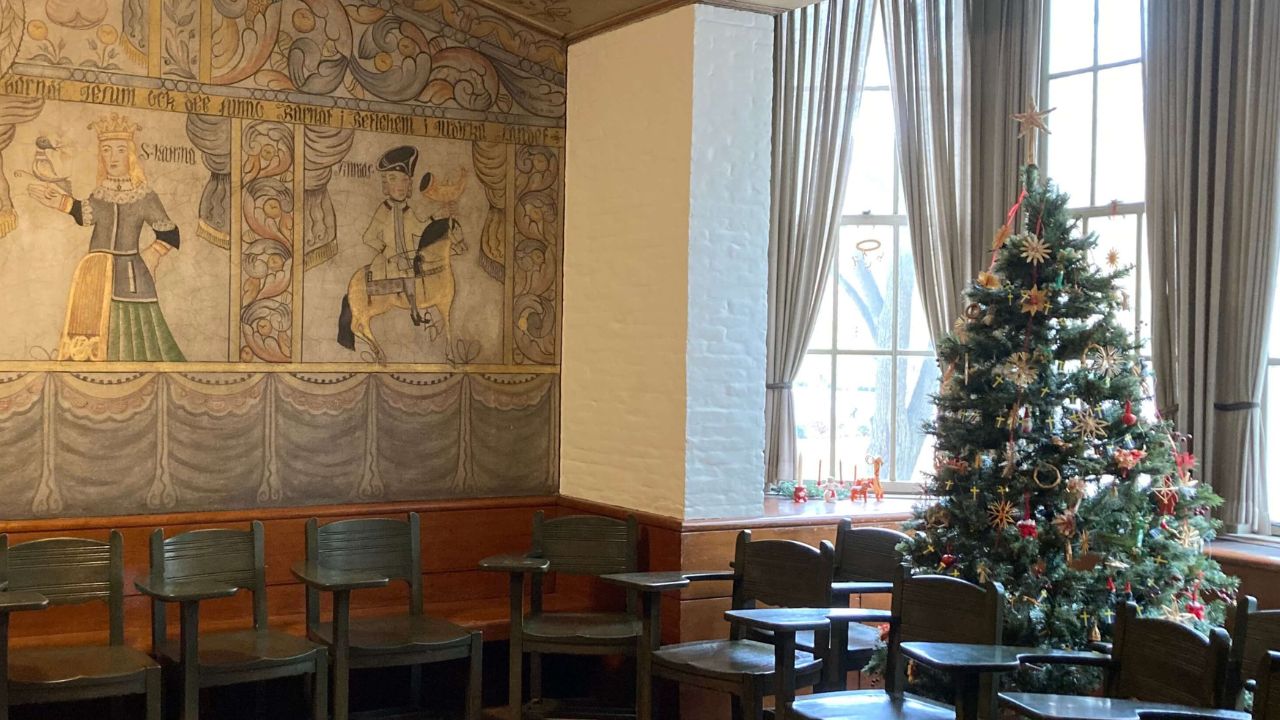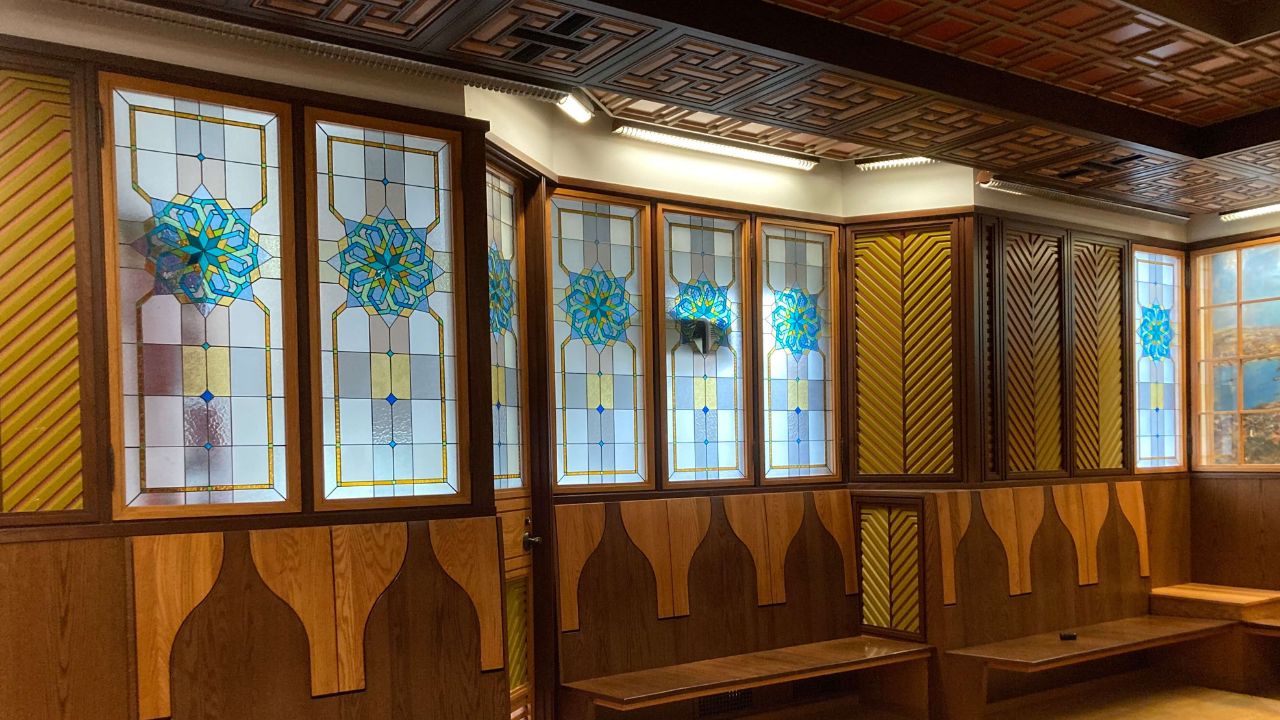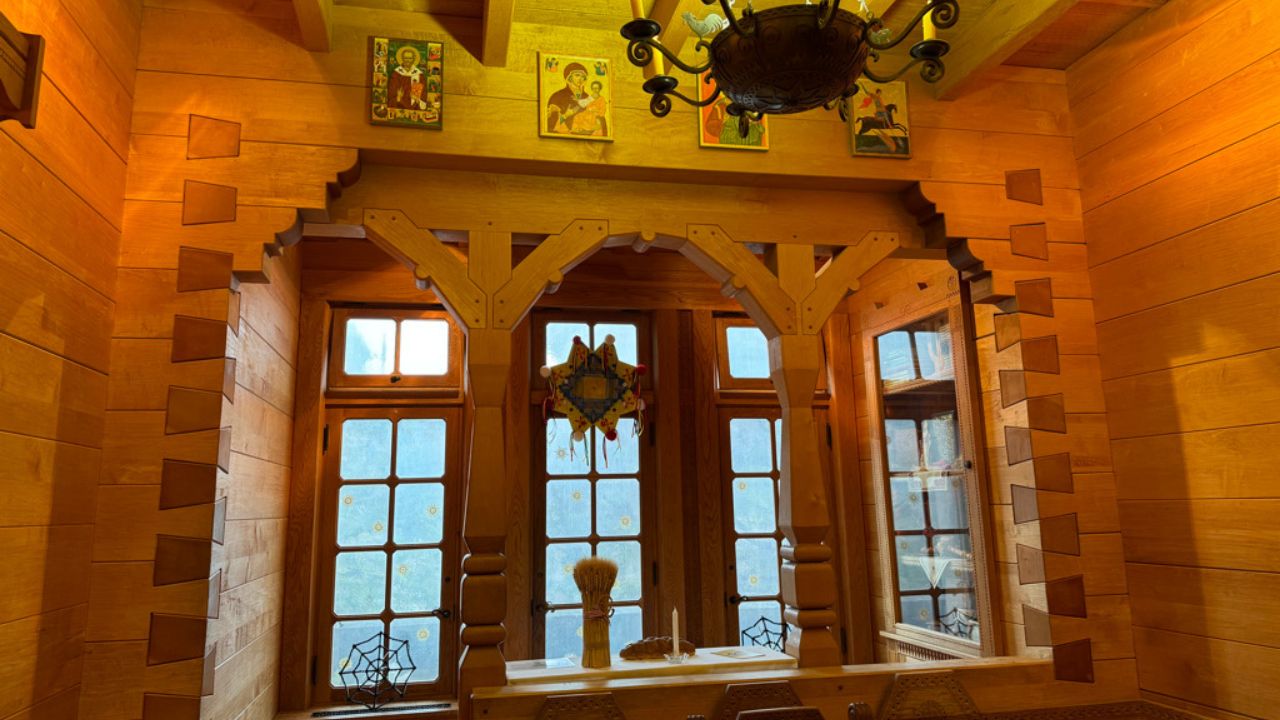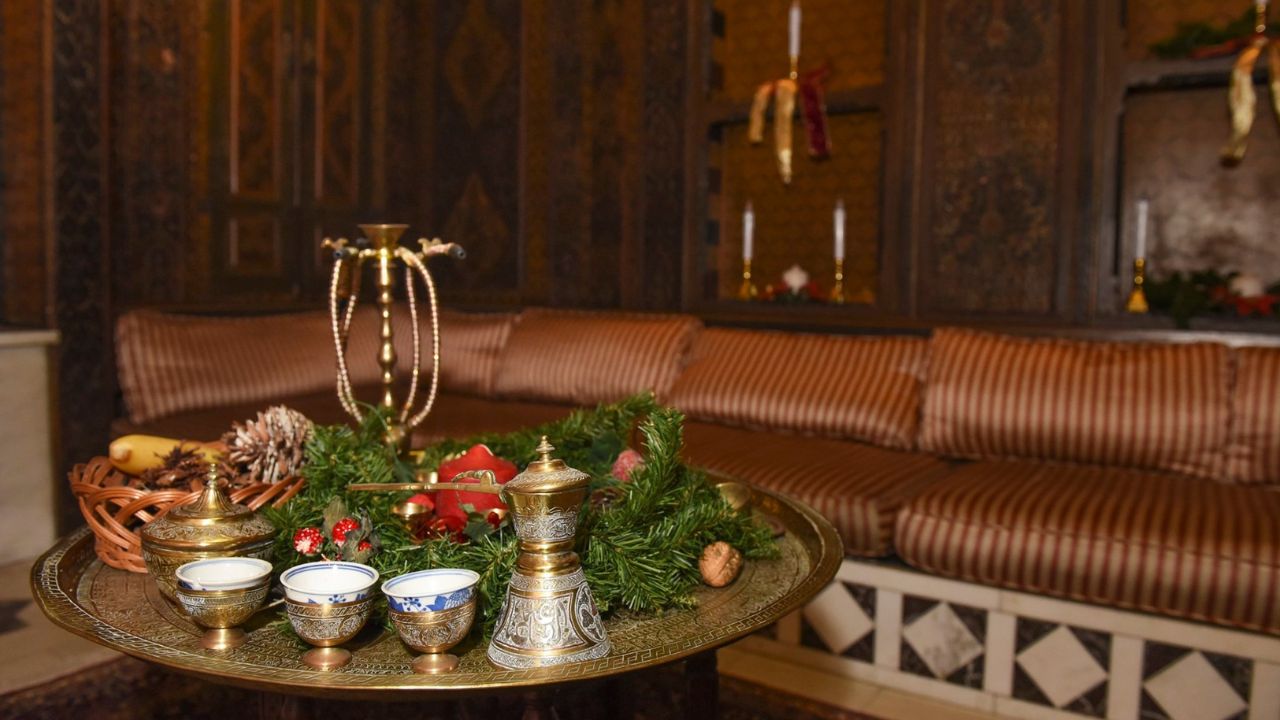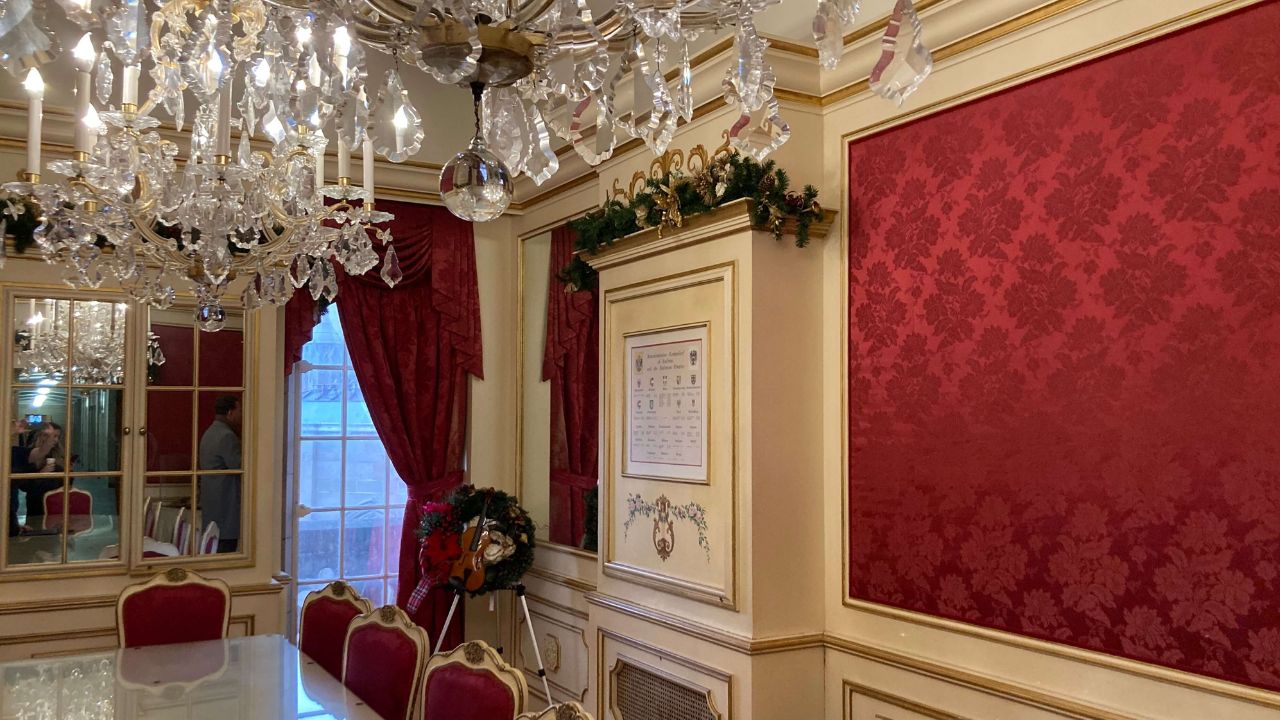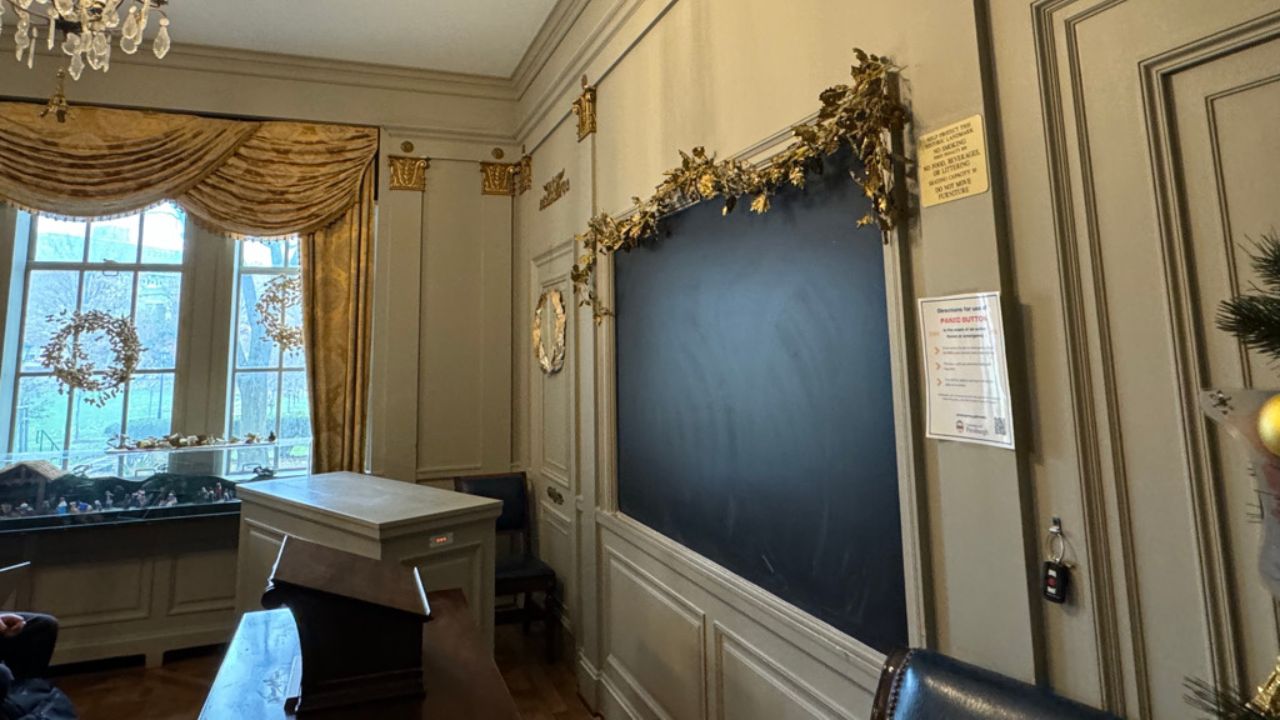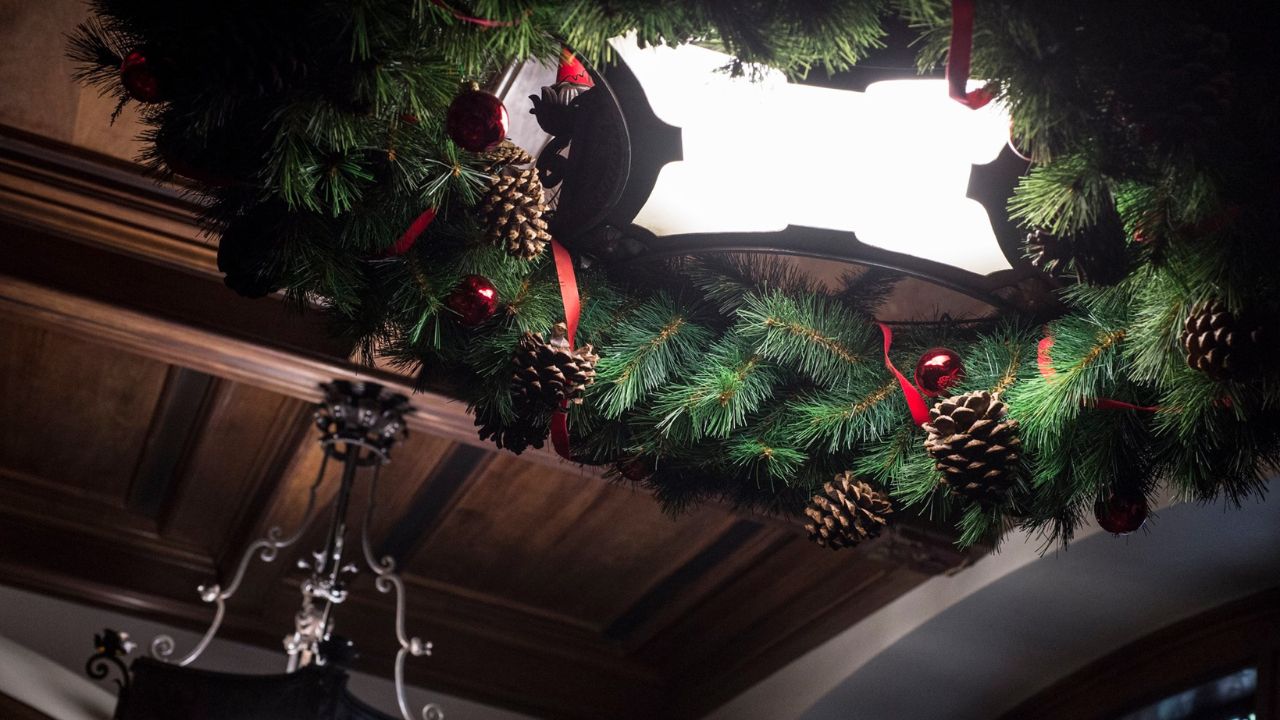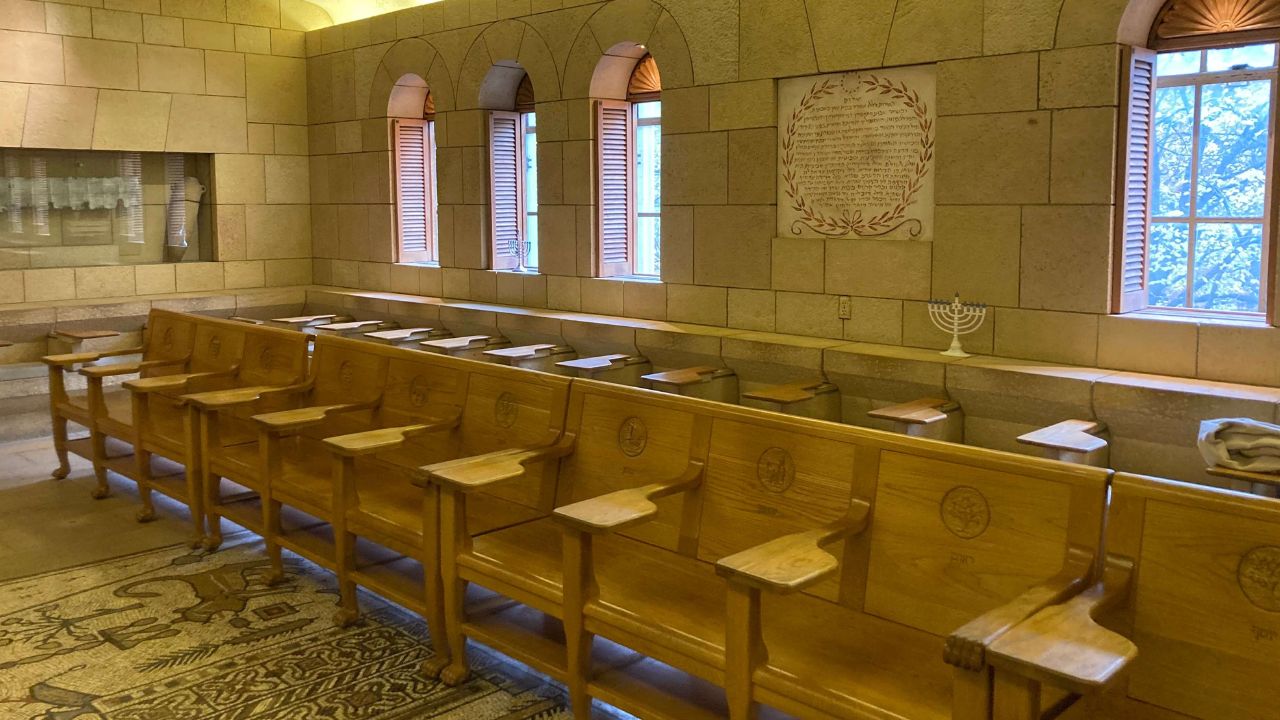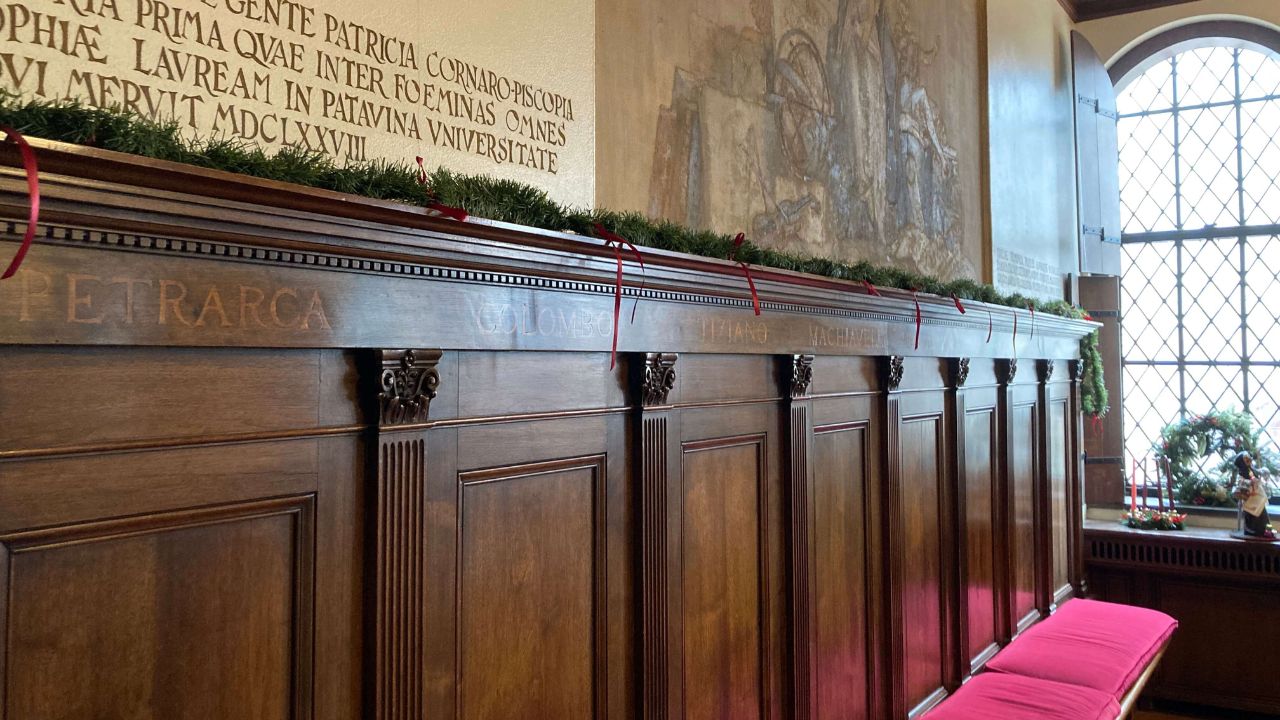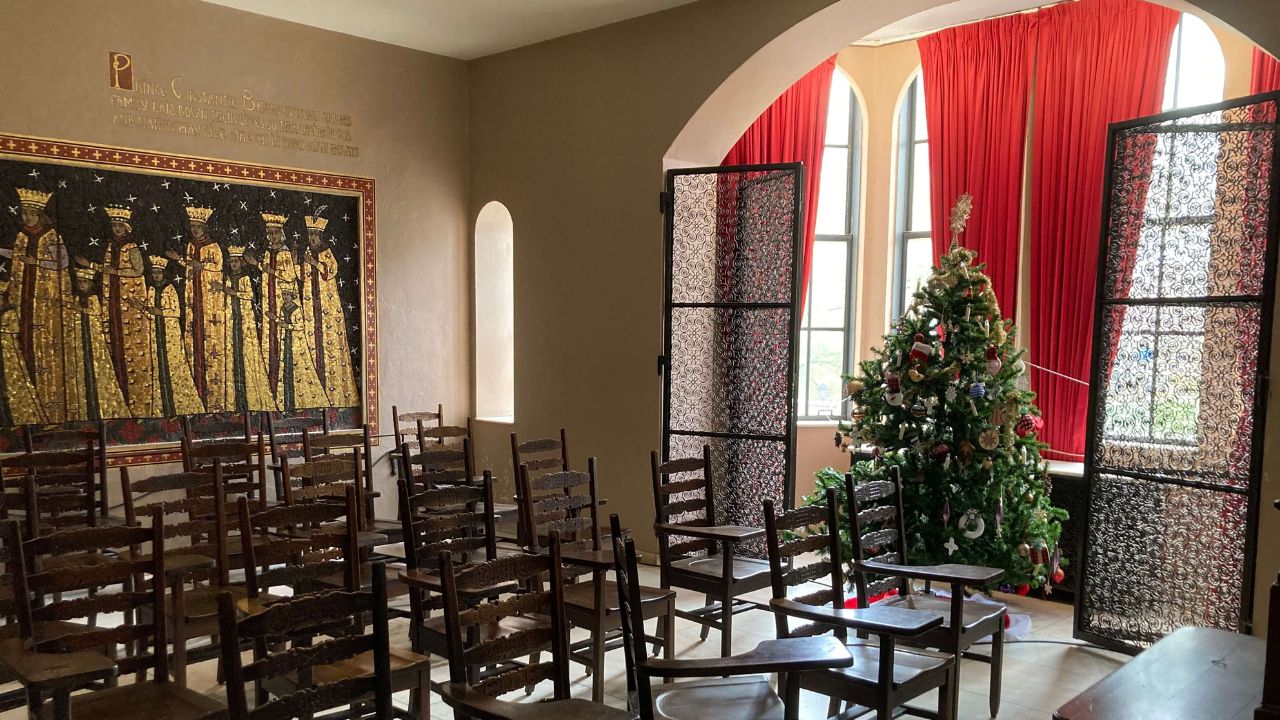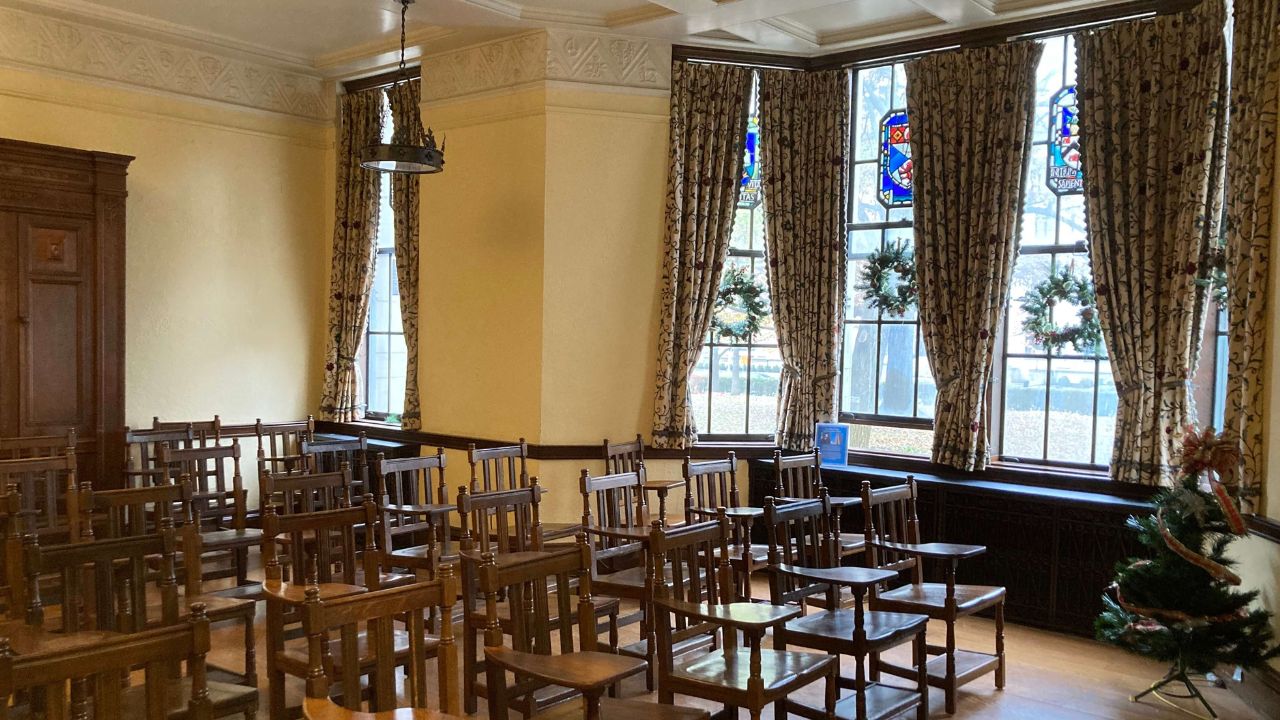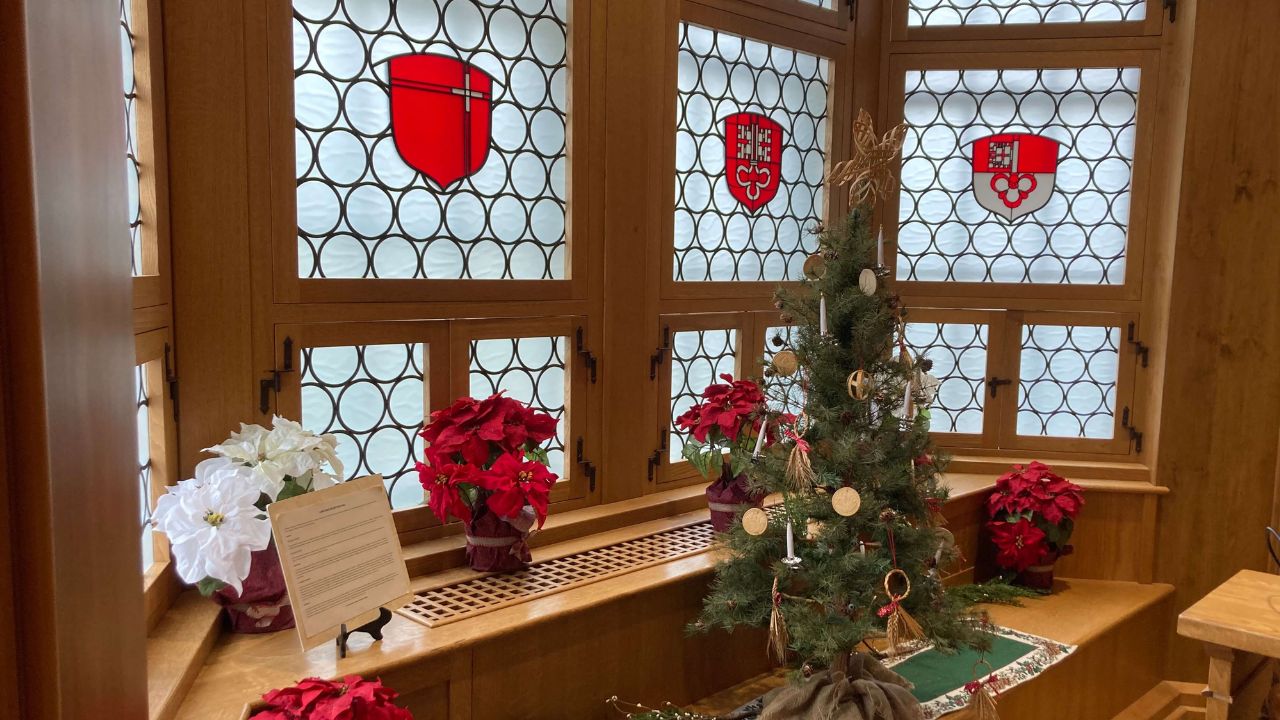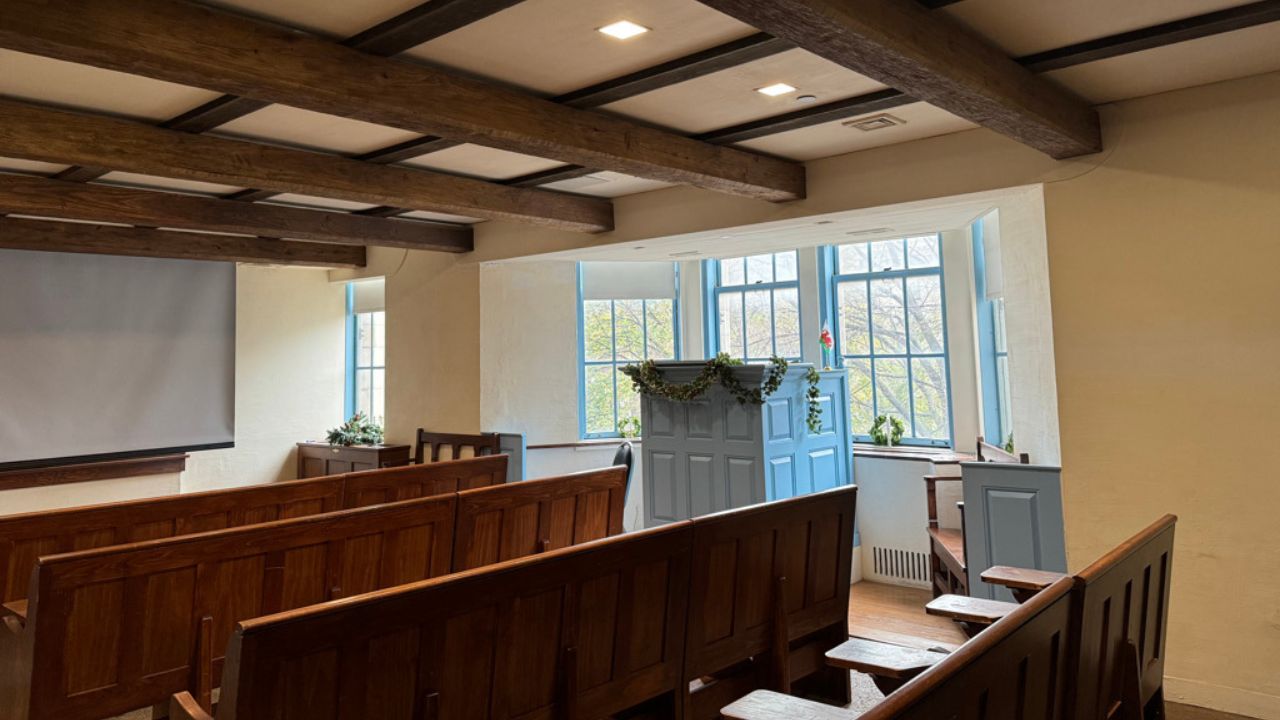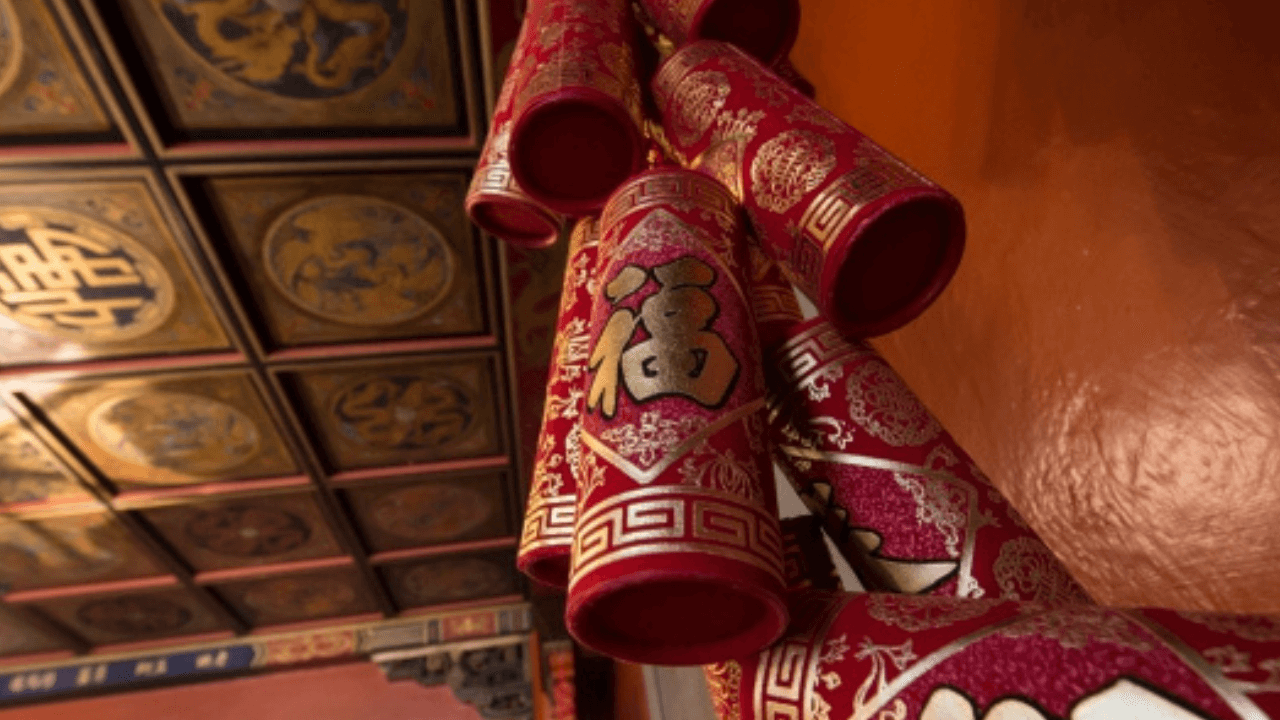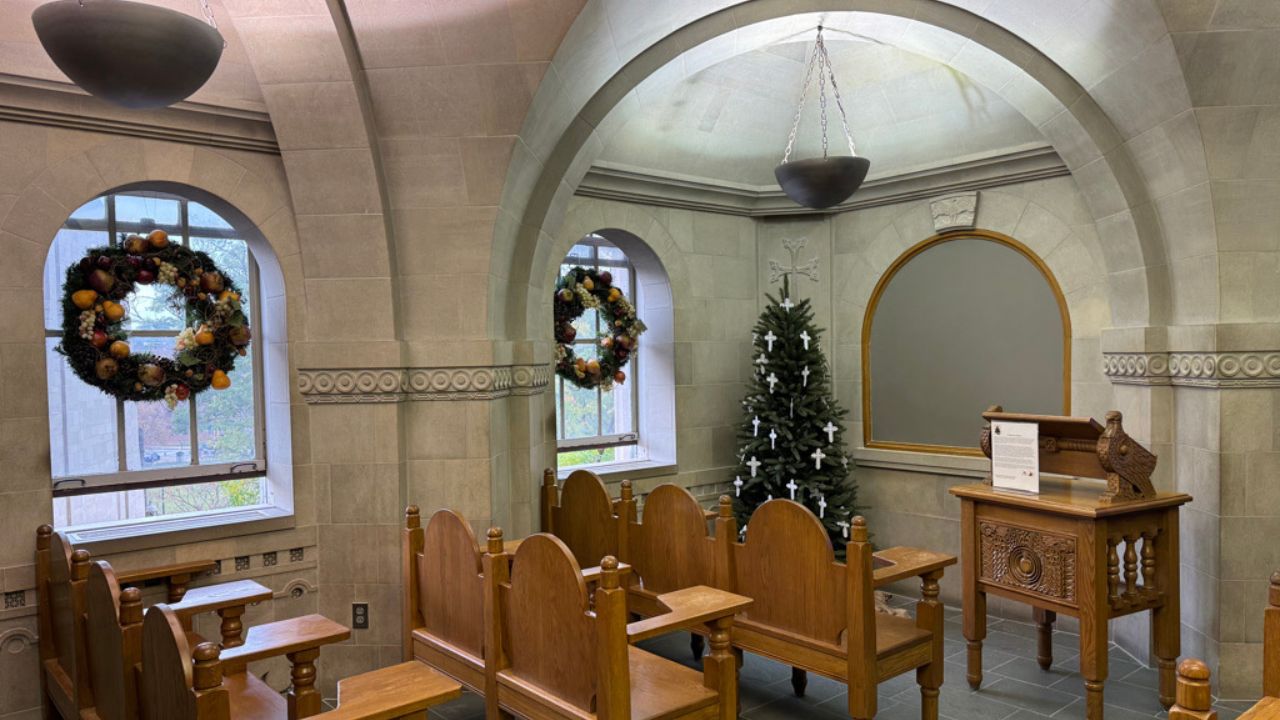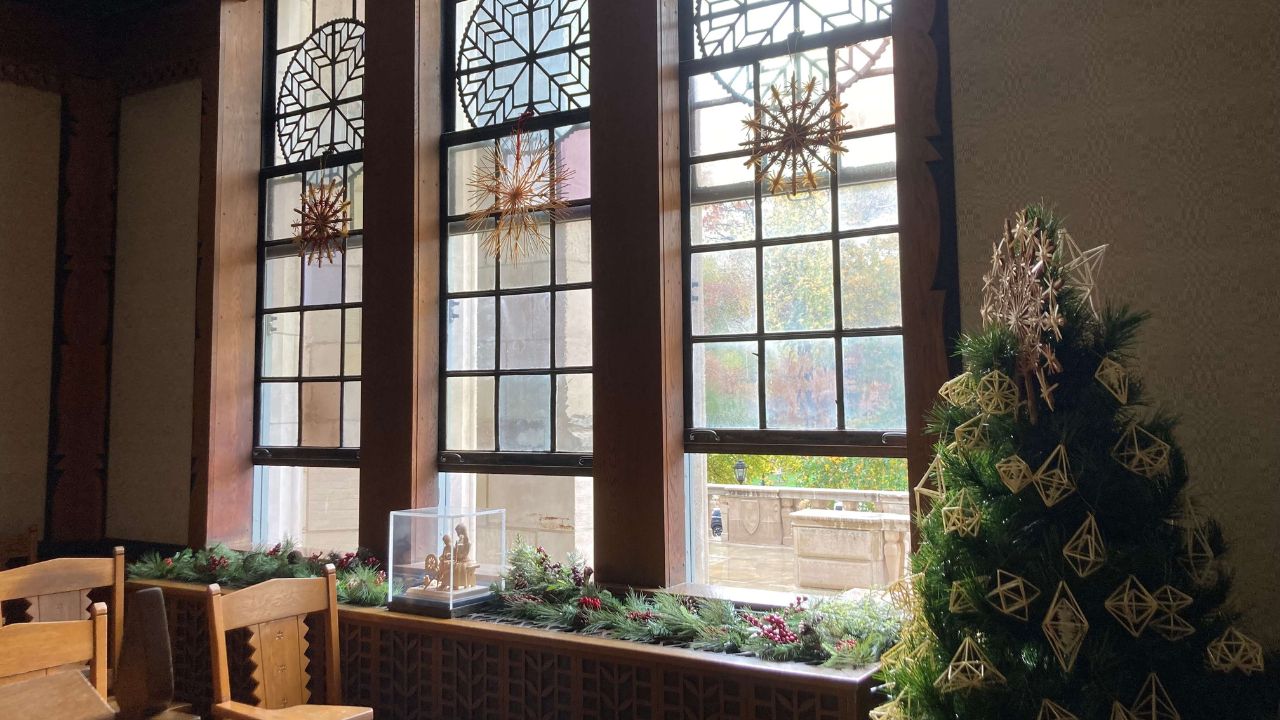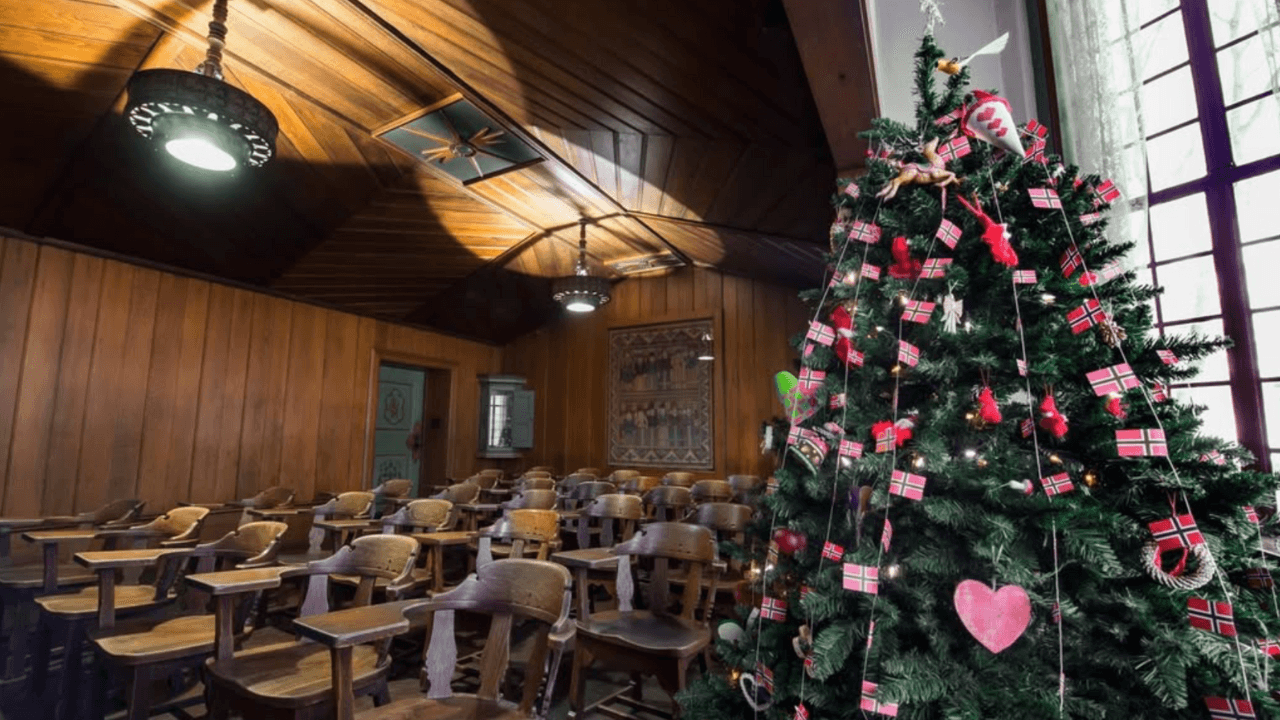Every year, the Cathedral of Learning decks the halls of its beloved nationality and heritage rooms. On a recent tour of the ‘Cathy,’ holiday traditions from around the globe were captured for a seasonal quiz. While a few rooms were, unfortunately, occupied or under construction, the majority of the rooms are represented below.
Take the Quiz!
Hover over (or tap if on mobile) the empty space below each question to reveal the correct answer. Let’s go!
![]()
Seven. Known as the Nguzo Saba, the seven principles are unity (Umoja), self-determination (Kujichagulia), collective work and responsibility (Ujima), cooperative economics (Ujamaa), purpose (Nia), creativity (Kuumba), and faith (Imani).
PHOTO: African Heritage Room
Which monarch introduced the Christmas tree tradition to England?
![]()
While most credit Prince Albert, the German consort of Queen Victoria, with the introduction of the Christmas tree tradition to the UK, it was actually Queen Charlotte, the German wife of King George III, who introduced the tradition in 1800.
PHOTO: English Room
Instead of Christmas trees, it was customary in Greece to decorate which vessel, commonly seen along its expansive coastline?
![]()
Due to their connection to the sea and nautical past, Greeks traditionally decorated a small boat, or karavaki, instead of a Christmas tree.
PHOTO: Greek Room
Celebrated in the month of Kartika, Diwali is one of the most celebrated festivals in India. What does the word “Diwali” mean?
![]()
“Diwali” is derived from the Sanskrit term dīpāvali, meaning “row of lights” in English. During Diwali, oil lamps, called diyas, are lit for 5 days, from Dhanteras (the first day of Diwali) to Bhaiya Dooj (the final day of Diwali).
PHOTO: Indian Room
Which country has Wren boys processions on the day after Christmas?
![]()
Ireland. On St. Stephen’s Day (December 26), Wren boys (or girls) don old clothes, straw hats, and painted faces and travel from house to house carrying a long pole with a holly bush tied to its top, singing, dancing, and playing music. The tradition goes back to ancient times when a real wren was killed and carried around in a holly bush (in modern times, no wrens are hunted or used).
PHOTO: Irish Room
Which island nation holds the record for the world’s longest Christmas celebration?
![]()
The Philippines. The festive season in the Philippines starts in September, marking the beginning of the Ber months (September, October, November, and December), and continues until January 6, culminating with the Feast of the Epiphany.
PHOTO: Philippine Room
![]()
Lucia buns, or lyssekatter, are S-shaped buns in the shape of sleeping cats.
PHOTO: Swedish Room
Which country celebrates Ramazan Bayrami, a three-day festival when sweets are eaten?
![]()
Turkey. Ramazan Bayrami, the Turkish expression for Eid al-Fitr, marks the end of the Ramadan fast. Also known as Şeker Bayramı, the festival is traditionally celebrated with chocolates and sweet foods during visits to family and friends.
PHOTO: Turkish Room
![]()
Ukraine. This tradition dates back centuries to a tale about a spider who, thankful for the warmth in the house provided by a poor family, spins elaborate webs on their Christmas tree. When the family wakes on Christmas morning and opens the curtains, sunlight turns the webs into silver and gold (the supposed origin of tinsel).
PHOTO: Ukrainian Room
Many Syrians and Lebanese celebrate Eid al-Fitr and the conclusion of the Ramadan fast by eating which shortbread cookies?
![]()
Ma’amoul. These shortbread cookies have many different variations of stuffing, including dates, pistachios, or walnuts, and they are often covered in powdered sugar.
PHOTO: Syria-Lebanon Room
While Krampus strikes fear into the hearts of Austrian children on the eve of St. Nicholas Day, what oft confused creatures were believed to roam the Alpine countryside from Christmas to Epiphany?
![]()
Perchten. Unlike Krampus, Perchten can be good or bad. While Schiachperchten (“ugly Perchten”) typically cavort with Krampus nowadays, special Schönperchten (“lovely Perchten”), called Glöckler, would appear on the night of January 5 (the eve of the Epiphany) to finally vanquish the winter spirits, leading to renewal in the spring season.
PHOTO: Austrian Room
On what day do French families buy a Galette des Rois, a special tart baked with a small porcelain object called a fève inside?
![]()
The Epiphany or Feast of the Three Kings (January 6). Whoever finds the fève in their portion is proclaimed the King (or Queen) for the day, wears a pretend crown, and can choose his King or Queen. There is no cheating allowed to get the fève with various strategies employed to make sure that no one cheats!
PHOTO: French Room
Germany. Gerhard Lang, a German publisher, is credited with creating the first printed Advent calendar. Lang was inspired by his mother’s tradition of sewing small treats into a box for him to open each day leading up to Christmas, similar to the daily “doors” one opens on an Advent calendar.
PHOTO: German Room
What does the word “Hanukkah” translate to?
![]()
Dedication. The holiday commemorates the rededication of the Jewish Temple in Jerusalem in the second century BCE.
PHOTO: Israel Heritage Room
![]()
Italian. The ancient tradition of eating fish on Christmas Eve derives from the Roman Catholic custom of abstinence from meat and dairy products on the eve of certain holidays, including Christmas.
PHOTO: Italian Room
What traditional Romanian Christmas custom involves groups of young people going door to door, singing carols and offering blessings, while often being rewarded with sweets, fruits, or money?
![]()
The custom is called colindatul, where carolers (colindători) sing festive songs and spread holiday cheer.
PHOTO: Romanian Room
![]()
Rowan. A twig from a rowan tree, believed to bring protection, is burned to clear away bad feelings and encourage harmony.
PHOTO: Scottish Room
Who is the Swiss version of Santa Claus?
![]()
Samichlaus, who wears a red cape and long robe. Accompanied by a donkey, Samichlaus carries a Chlaussack, a bag filled with mandarines, nuts, chocolates, cookies and gingerbread.
PHOTO: Swiss Room
![]()
Noson Gyflaith, which means “toffee evening” in English. On Christmas Eve, it was customary for families to make toffee/taffy until the Plygain service first thing on Christmas morning.
PHOTO: Welsh Room
What is the significance of giving red envelopes during Chinese New Year, and what do they traditionally contain?
![]()
Red envelopes, or hongbao, symbolize good luck and prosperity. They are traditionally given to children and unmarried adults by older family members and contain money, which is meant to bring good fortune in the year ahead. The red color of the envelope represents happiness and wards off evil spirits.
PHOTO: Chinese Room
On the morning of Armenian Christmas, Surp Dzununt, what significant ritual is performed in churches?
![]()
Blessing of Water. On Christmas Day in Armenia, also known by some as Water Blessing Day, priests bless water for people to take home. The blessed water is believed to have healing properties, bring blessings, and protect households. Some drink the water or wash their faces with it.
PHOTO: Armenian Room
In Lithuania, the traditional Christmas Eve meal, Kūčios (koo-cheer-ohs), includes at least how many meat-free dishes?
![]()
Twelve. Dishes may include herring/salted fish, dry peas, mushrooms, beetroot salad, prunes, wheat with honey, small pastries called kūčiukai, boiled potatoes, sauerkraut, sweet wine, poppy seed milk, and cranberry kissel.
PHOTO: Lithuanian Room
In Russia, the New Year celebration, Novy God, is the most anticipated holiday of the year, with children expecting a visit from Grandfather Frost, Ded Moroz, on New Year’s Eve. Who accompanies Grandfather Frost to help distribute presents to children?
![]()
His granddaughter, Snegurochka, also known as the Snow Maiden.
PHOTO: Russian Room
On Christmas Eve, Norwegians leave a bowl of risengrynsgrøt, or rice porridge, out for which mischievous creatures?
![]()
The nisser. These elf-like spirits were believed to be responsible for the protection and welfare of the farmstead and its buildings. In exchange, they demanded a bowl of porridge with butter on Christmas Eve. If they did not receive their Christmas porridge, the nisser would wreak havoc or leave the farmstead, bringing poverty and misfortune upon the property’s owners.
PHOTO: Norwegian Room
The Cathedral of Learning Nationality and Heritage Rooms will be decorated for the holidays until January 17.

